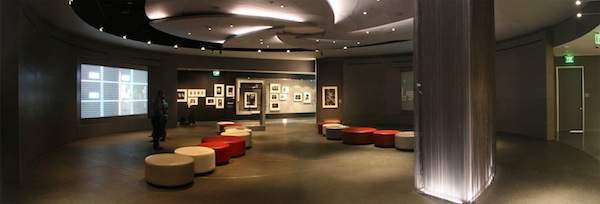Shoppers at the Westfield Century City Mall in Los Angeles may never know that the Annenberg Space for Photography exists next door. The building is low. It is surrounded by gelid corporate buildings. You can’t see it from the street. You either get to it by traversing the well-guarded lobby of 2000 Avenue of the Stars, or ascending from the third underground parking floor through multiple escalators. Yet it’s inconspicuousness is a plus. Visitors, rather than getting distracted by gimmicks, can focus on the building’s content: photography. The space hosts a didactic message: photography is much more than just capturing images. Compulsive shooters may become more aware that “your first 10,000 photographs are your worst,” as Henri Cartier-Bresson used to say.
Photography for architecture is a well-established profession, but architecture for photography is practically non-existent. Sullivan’s motto “Form Follows Function” was not applied here. Form did not follow function. The building came first as a “generic cultural pavilion,” without a specific client or program. The philanthropic Annenberg Foundation took charge of the space and commissioned AECOM’s interior designers (formerly DMJM) to create an environment dedicated solely to photography. Considering that large portions of the exterior walls are all glass, it was a challenging assignment
The design concept is simple: 1. A central circular space meant to act as a metaphor for convex lens. An iris-like design is displayed on the ceiling, recalling the aperture of a camera lens. Glass screens 7’ x 14’, with high definition rear-projection imaging systems display digital photography with clarity. A movable modular system permits to expand the digital capacity of the main gallery space on an as-needed basis. Most of the color scheme is based on a range of grays; 2. A photography reading room and workshop with a kitchen, where special programs are presented; 3. The space in-between the curved surfaces and the exterior walls is used for periodic exhibitions; 4. The rest of the building, off-limit to visitors, houses administrative uses.

